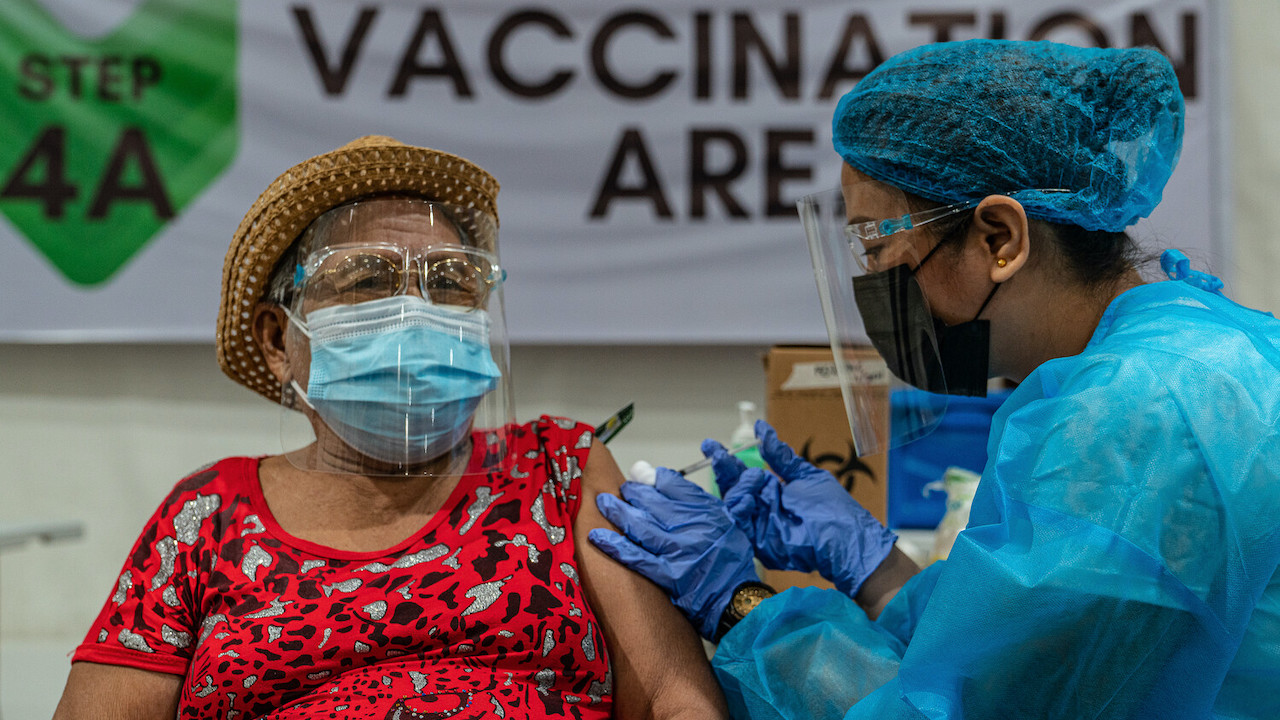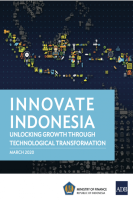
Big data can help countries track vaccine rollout and ensure that vaccines are stored within a precise temperature range, preserving their quality along the distribution chain. Photo credit: ADB.
The technology can help governments respond swiftly to crises, improve services, and enhance resilience to future shocks.
Every government has access to masses of data that if used properly can yield insights that can help them respond swiftly to crises, improve services, and enhance resilience to future shocks.
Harnessing big data has the potential to boost gross domestic product, a paper from the Asian Development Bank (ADB) says.
In the health sector, adopting remote monitoring systems could bring Southeast Asian countries annual cost savings of $9.4 billion by 2030 through reduced hospital visits, shorter patient stays, and more tailored medical procedures, says the paper which looks at how regional economies can harness big data in the wake of the coronavirus disease (COVID-19) pandemic.
Using analytics to direct highly targeted health interventions for at-risk populations could lift gross domestic product by $15.5 billion annually.
In the education sector, personalized learning, and online job matching, using digital technologies could contribute $77.1 billion annually by 2030, the paper says.
Key enablers
To ensure successful implementation of big data, the paper says senior leaders must commit to the plans and be able to oversee the utilization and application of big data across agencies and ensure sharing of information between government ministries. Stakeholders from different sectors must also be involved to ensure a country’s big data ambitions are coordinated and aligned with sector road maps.
Governments must also be open to adopting open data policies, improving data collection processes, creating an integrated data platform to facilitate data sharing between government agencies, and strengthening collaboration mechanisms for private sector engagement. They must also have mechanism in place to safeguard data and facilitate data sharing, especially in times of crisis. This entails having data protection laws in place and working with other governments and the international community on common standards and approaches to ensure minimum safeguards for data security and to facilitate the provision of open data.
Preparing public sector employees is also key. This entails putting in place education initiatives to increase the pipeline of graduates with the right skills to join the civil service and equipping existing civil servants with the necessary skills to make data-driven decisions. Governments must also have access to relevant technologies, be able to conduct pilot studies to understand the implications of these new solutions and help minimize risks, and invest in information and communication technology infrastructure.
The paper says although the potential of big data has long been recognized, the pandemic has highlighted its value in driving countries’ post-pandemic recovery. Harnessing big data is in fact one of the cornerstones ADB identified as crucial for the region’s post-COVID-19 recovery.
Here are five ways big data can help Southeast Asian governments recover from COVID-19:
1. Analyzing COVID-19 activity. To strengthen the quality and efficiency of health services and optimize costs amid the pandemic, big data can be used in strengthening surveillance systems for infectious diseases, preventing and detecting noncommunicable diseases, improving health system capacities, and supporting vaccination programs.
Some countries are already doing this. Across Asia, countries have deployed big data for contract tracing in a bid to contain the pandemic. In Singapore, for instance, the government set up a system to trace the movement of COVID-19 patients using facial recognition and public transportation records.
2. Supporting vaccine roll-out. Big data can help ensure that vaccines are stored within a precise temperature range, preserving their quality along the distribution chain. Machine learning can identify populations with health vulnerabilities so they can be prioritized in vaccine delivery. Information from social media channels can be analyzed to gauge public sentiment on immunization and shape communication strategies to address vaccine concerns and overcome hesitancy.
Israel, one of the countries leading in vaccine distribution, uses data from health funds to track the progress of its vaccine rollout.
3. Monitoring noncommunicable diseases. Predictive models based on data from social media and search engines can identify risks of developing noncommunicable diseases. Authorities can use the information to put in place early interventions to prevent outbreaks. Governments can also use data from smartphone-connected thermometers and social media to track influenza activity in real time. Mobile phone data can also be used in outbreak response such as contact tracing and identifying infection hot spots.
Google once had a service to track flu outbreaks using search results that match flu-related activity. The goal is to help authorities respond quickly to reduce the impact of flu outbreaks or epidemics.
4. Targeting vulnerable populations. The pandemic has highlighted the need for data collection approaches and innovative datasets that can support efforts to fight poverty.
In the Philippines and Thailand, there have been efforts to use traditional analytical approaches with machine learning from satellite imagery in mapping poverty levels. Also in the Philippines, poverty maps using satellite data were used to identify households which needed cash aid amid the pandemic. In Indonesia, cell phone usage data has generated insights into migration patterns.
Big data can also help governments assess the effectiveness of social welfare programs. In particular, governments can analyze records of past beneficiaries and the results of the interventions and use these insights to design programs.
5. Identifying skills gap. With the pandemic further disrupting labor markets across industries and making workers more vulnerable, governments need to explore data-driven applications in reskilling workers and improve the long-term effectiveness and resilience of the education system.
Datasets from online job portals can provide insights on employment trends and skills demand so schools and training institutes can better respond to industry needs.
Big data also offers great potential to improve learning outcomes. Schools can analyze student records to provide targeted support to those in need and prevent them from dropping out. With many countries resorting to remote learning due to COVID-19, big data can be harnessed to analyze students’ learning styles, areas of interest, abilities, and progress to customize pedagogical practices.

